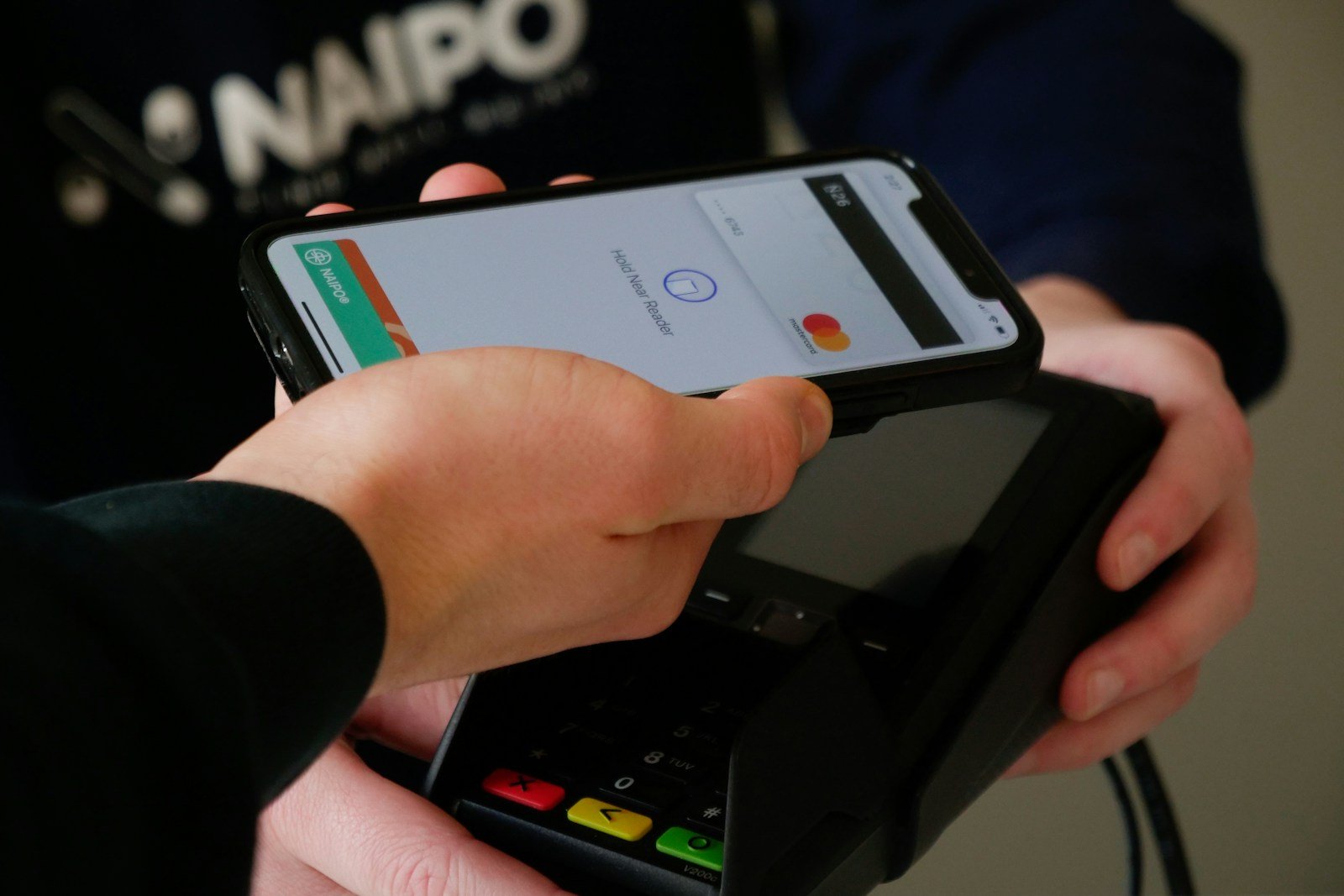Taking credit card payments is vital for most businesses today. It lets customers buy what they want without carrying cash. The best payment method for your business depends on your size, type, and where you sell things—in a store, online, or both.
Picking the right way to accept cards can save you money and make buying easier for customers. You have several good options like Stripe, PayPal, and Square. Each has its own fees and features. Some work better for online shops while others fit stores with counters where people can swipe or tap their cards.
1. Choose a Payment Service Provider (PSP)
Picking the right Payment Service Provider is your first step to accept credit card payments. A PSP works as a middleman between your business and banks, helping you process payments safely.
When choosing a PSP, look at which payment methods they support. Good providers offer various options like credit cards, debit cards, and digital wallets to match your customers’ preferences.
Fees matter a lot in this decision. Compare different providers to find one with reasonable costs. Some charge monthly fees while others take a percentage of each transaction.
Security should be a top priority. Your PSP needs strong encryption and fraud protection tools to keep customer data safe. This builds trust with your shoppers.
Consider how the payment system will fit with your current business setup. The best PSP will integrate smoothly with your website or store without causing technical headaches.
Customer support quality varies between providers. Pick a PSP that offers help when you need it, especially during busy sales periods when payment issues can hurt your business.
For small businesses just starting out, setting up a merchant account through your PSP is essential. This account lets you receive funds from card transactions.
Think about growth too. Choose a provider that can handle more volume as your business expands. Switching providers later can be complicated and costly.
Popular PSPs include Stripe, PayPal, Square, and Authorize.net. Each has different strengths, so research which one fits your specific needs best.
Some PSPs offer extra tools like invoicing, recurring billing, or point-of-sale systems. These features might save you from buying separate solutions later.
Mobile payment options are increasingly important. Make sure your PSP lets customers pay easily from phones and tablets for the best shopping experience.
2. Set Up a Merchant Account
A merchant account is a special bank account that lets your business accept credit card payments. This account works with your payment processor to move money from customers to your business bank account.
To open a merchant account, you’ll first need to get a business license. Many cities and states require this before you can legally operate a business.
Next, you should open a business bank account. This keeps your business money separate from personal funds and makes accounting easier.
When setting up a merchant account, you’ll need to choose a provider. Options include traditional banks, payment service providers, and specialized merchant service companies.
Compare fees closely before deciding. Look at setup fees, monthly charges, per-transaction costs, and any cancellation penalties. Small differences in rates can add up to big money over time.
Processing time matters too. Some providers deposit funds within 24 hours, while others might take several days. Fast access to your money helps with cash flow.
Contract terms vary widely between providers. Some require long commitments with early termination fees, while others offer month-to-month service. Flexible terms are often better for new businesses.
Security is a critical factor when selecting a merchant account. The provider should offer strong fraud protection and comply with Payment Card Industry (PCI) standards to protect customer data.
Many businesses now choose payment service providers (PSPs) like Square, Stripe, or PayPal instead of traditional merchant accounts. These all-in-one solutions combine the merchant account and payment gateway, making setup faster.
PSPs typically have simpler pricing and fewer paperwork requirements. This makes them popular with small businesses and startups who want to start accepting cards quickly.
Before finalizing your choice, check customer reviews and support options. Good technical support is essential when payment issues arise. Look for providers offering 24/7 help by phone, email, or chat.
3. Integrate a Payment Gateway
Adding a payment gateway to your website is a key step for accepting credit cards online. This process connects your site to credit card networks and banks.
First, choose a payment processor that fits your business needs. Popular options include Stripe, PayPal, and Square. Each has different fees and features.
Setting up a merchant account is often required. This special bank account lets you accept card payments from customers. Some payment processors offer combined services that include both gateway and merchant accounts.
The technical integration varies based on your website platform. Many payment gateways offer plugins for common systems like WordPress, Shopify, or Wix. These make setup much easier.
For custom websites, you’ll need to use the payment gateway’s API. This means adding code to your website that connects to their system. Many providers offer code samples and documentation.
Security is critical when handling credit cards. Make sure your website has an SSL certificate installed. This creates a secure connection for customer data.
Your payment gateway should be PCI compliant. This set of security standards protects card data. Most reputable gateways handle much of the compliance work for you.
Testing is essential before going live. Process some test transactions to make sure everything works properly. Many gateways provide a sandbox environment for this purpose.
Consider how the payment form looks on mobile devices. More than half of online shoppers use phones to make purchases. Your checkout page must work well on small screens.
Customers expect clear receipts and confirmation messages. Set up automatic emails that thank customers and provide order details after purchase.
Keep your integration updated. Payment gateways regularly improve their systems and security. Outdated connections might stop working or create security risks.
4. Use Stripe for Easy Integration
Stripe offers one of the simplest ways to accept credit card payments for businesses of all sizes. With a single integration, you can accept credit cards, debit cards, and other popular payment methods worldwide.
Setting up Stripe doesn’t require technical expertise. The platform is designed for easy implementation whether you’re running an online store or need in-person payment solutions. You can accept payments online without complicated steps.
Small businesses benefit from Stripe’s straightforward approach. The service lets you accept credit card payments online, in person, and even over the phone with minimal setup.
No extra tools are needed in many cases. Businesses can use Stripe directly to process payments without purchasing additional software. This saves money and reduces technical complications.
The platform includes customizable payment forms. These forms can match your brand’s look and feel while maintaining security standards. Stripe also offers pre-built checkout pages for even faster setup.
Security comes built-in with Stripe’s system. They handle the complex parts of payment security so business owners don’t need to worry about compliance issues. This protection extends to both customers and merchants.
Stripe works across devices and platforms. Whether customers pay on phones, tablets, or computers, the system functions smoothly. This flexibility makes it ideal for businesses with diverse customer bases.
The dashboard provides clear payment tracking. Business owners can easily monitor transactions, refunds, and customer information in one place. This simplifies bookkeeping and financial management.
Integration with other business tools is another strength. Stripe connects with accounting software, email marketing platforms, and inventory systems. These connections help create smooth business operations.
Pricing is transparent with no hidden fees. Stripe charges per transaction rather than requiring monthly minimums in most cases. This makes it accessible for seasonal businesses or those with varying sales volumes.
Customer support resources help with any issues. Their documentation provides clear instructions for setting up different payment types. Support teams are available when more help is needed.
5. Leverage PayPal for Online Payments
PayPal offers a simple way for businesses to accept credit card payments without complex setups. Businesses can start processing transactions quickly with minimal technical knowledge.
Setting up PayPal requires just a business account on their website. After verification, merchants can add payment buttons to their websites or send payment links to customers via email.
One major benefit is PayPal’s built-in fraud protection. This security feature helps protect both buyers and sellers from unauthorized transactions and potential scams.
PayPal works with all major credit cards including Visa, Mastercard, and American Express. Customers don’t need their own PayPal accounts to make payments, making the process smoother for everyone.
The platform offers various payment solutions to fit different business needs. Options include PayPal Checkout, PayPal Payments Standard, and PayPal Commerce Platform for larger operations.
Transaction fees typically range from 2.9% plus a small fixed fee per transaction. While not the cheapest option, many businesses find the convenience and customer trust worth the cost.
Mobile payments are also supported through PayPal. The company provides tools that let businesses accept credit card payments on smartphones and tablets, perfect for on-the-go sales.
Integration with shopping carts and website builders is straightforward. Most popular e-commerce platforms offer direct PayPal connections that require minimal configuration.
Customer trust represents another advantage. Many shoppers feel safer buying from sites that display the PayPal logo, potentially increasing conversion rates for online stores.
For businesses with international customers, PayPal handles currency conversion automatically. This feature removes barriers when selling to global markets.
The reporting tools help track sales and monitor business performance. Merchants can access detailed transaction histories and financial reports through their PayPal dashboard.
PayPal also offers invoicing features that help businesses maintain professional relationships with clients. These digital invoices track payment status and send automatic reminders.
6. Employ Square for Mobile Transactions
Square offers a simple way to accept credit card payments on the go. This popular payment system works with smartphones and tablets, making it perfect for businesses that need flexibility.
With Square, you can take payments anywhere at any time. The system turns your device into a credit card terminal, which is great for food trucks, craft fairs, or home service providers.
Getting started is easy. Business owners just need to download the Square app and connect the card reader to their device. The card reader is often free when signing up for a new account.
Square charges a flat rate for each transaction. This makes costs predictable, which helps with budgeting and financial planning.
The system also works for phone payments. This feature lets businesses accept credit cards when customers call in orders. It takes less than two minutes to process these payments.
Square provides detailed sales reports too. These reports help track what sells best and when customers typically shop. This information can guide important business decisions.
The Virtual Terminal feature makes Square even more useful. It allows merchants to enter card details on any computer without needing a physical card reader.
For businesses that send invoices, Square has tools for that too. The system can create and send professional invoices directly to customers’ email addresses.
Security is a top priority with Square. The system encrypts payment information and follows industry standards to keep customer data safe.
Square works with most major credit cards. This includes Visa, Mastercard, American Express, and Discover, giving customers plenty of payment options.
7. Invest in a Point-of-Sale (POS) System
A Point-of-Sale (POS) system is one of the most efficient ways to accept credit card payments for your business. This technology lets you process cards right where you sell your products or services.
Modern POS systems do much more than just take payments. They can track inventory, manage customer data, and create sales reports. This helps you run your business better while making payment processing smooth.
POS software costs vary widely. Some basic options are free, while more feature-rich systems can cost up to $200 per month. The price depends on what features you need for your specific business.
Many businesses like POS systems because they work fast. Customers can tap, swipe, or insert their cards and be on their way quickly. This speed helps keep lines moving during busy times.
POS systems follow a simple five-step process for handling credit cards. The system reads the card, checks the account, gets approval, finishes the sale, and sends a receipt. All this happens in seconds.
You have two main options when choosing a POS system. You can pick one with built-in card processing or one that works with outside payment processors. Built-in processing is simpler, but separate systems often give you more choices and sometimes lower fees.
For small shops and restaurants, a tablet-based POS system works well. These use regular tablets with special software and card readers. They cost less than traditional systems but still offer many useful features.
When shopping for a POS system, look at both the upfront costs and monthly fees. Some providers charge more for the equipment but less each month. Others offer free equipment but make up for it with higher processing fees.
The right POS system can be the most convenient way to take payments in person. It not only handles cards but can also manage cash, checks, and even digital payment methods like Apple Pay or Google Pay.
Before choosing a system, think about what your business really needs. A small coffee shop needs different features than a clothing store with lots of inventory. Pick a system that fits your specific business type.
8. Install Countertop Card Readers
Countertop card readers offer a reliable way for businesses to accept credit card payments in physical locations. These devices sit on your checkout counter, letting customers easily swipe, tap, or insert their cards to complete purchases.
Setting up a countertop card reader is simpler than many business owners expect. Most modern readers come with clear instructions and minimal technical requirements. You’ll typically need a power outlet and either WiFi or ethernet connection to get started.
Countertop card readers work best for businesses with dedicated checkout areas. Retail stores, restaurants, and service businesses benefit from their stability and consistent performance.
Installation usually takes just a few steps. Unbox the reader, connect it to power, and follow the setup instructions provided by your payment processor. Many systems walk you through the process with on-screen prompts.
The reader will need to connect to your payment processing account. This step links the physical hardware to your merchant account, enabling funds to flow directly to your business bank account.
Modern countertop readers support multiple payment types. Beyond traditional credit cards, many accept contactless payments, mobile wallets like Apple Pay, and chip-enabled cards for enhanced security.
Your payment processor may provide training materials. Take advantage of these resources to ensure your staff knows how to process transactions, issue refunds, and handle payment questions from customers.
Position the reader where both staff and customers can easily access it. The screen should be visible to customers during transactions, allowing them to verify amounts and follow prompts.
Some businesses need to integrate their card reader with existing point-of-sale systems. Check compatibility with your current technology before purchasing new hardware.
Regular maintenance keeps readers working properly. Clean the card slots periodically with approved cleaning cards, and keep the reader’s surface clean without using harsh chemicals that might damage the device.
If you’re opening a new location, order readers well in advance. This gives you time to test the equipment before your grand opening and ensure your payment systems work flawlessly from day one.
9. Utilize a Virtual Terminal for Remote Payments
A virtual terminal turns your computer into a credit card processing system. It lets businesses accept payments without a physical card reader. This tool works through a secure web-based platform.
Small businesses benefit greatly from virtual terminals. They can take payments over the phone or by mail. Staff simply enter the customer’s card details into the web interface to process the transaction.
Virtual terminals accept many payment types. Most systems handle credit cards, debit cards, and ACH payments. This flexibility helps businesses meet customer preferences.
The setup is straightforward and requires minimal equipment. All you need is a computer and internet connection. No special hardware installation means you can start accepting payments quickly.
Remote work becomes easier with virtual terminals. Staff can process payments from anywhere with internet access. This feature proved essential during the pandemic when in-person operations were limited.
Security remains a top priority for virtual terminal providers. They use encryption to protect customer data. Many systems also offer fraud detection tools to prevent unauthorized transactions.
Billing for services becomes more efficient. Businesses can create recurring payment schedules for subscription-based models. This automation reduces administrative work and ensures timely payments.
Square’s Virtual Terminal and similar services integrate with accounting software. This connection simplifies bookkeeping and financial reporting. Transaction records update automatically after each payment.
Businesses pay fees similar to other credit card processing methods. Typically, providers charge a percentage of each transaction plus a small fixed fee. Some services include the virtual terminal as part of a broader payment package.
Customer convenience improves with virtual terminals. Clients can pay without visiting your location. This option works well for businesses that provide services at customer locations or remotely.
The technology continues to evolve with new features. Many virtual terminals now include reporting tools that track sales trends and customer behaviors. These insights help businesses make informed decisions.
10. Explore Contactless Payment Options
Contactless payments let customers pay without physically swiping or inserting their cards. This payment method uses wireless technology to transmit data between a card or mobile device and a payment reader.
Businesses can now offer contactless payment options that make transactions faster and more convenient. Customers simply tap their card or phone on a reader to complete a purchase.
These systems work through near-field communication (NFC) technology. When a customer holds their card or phone near the reader, payment information transfers quickly and securely.
Many credit cards now come with built-in contactless chips. These contactless cards represent the next generation of bank cards, allowing quick transactions with just a tap.
Mobile wallets like Apple Pay, Google Pay, and Samsung Pay also support contactless payments. Customers can add their credit card information to these apps and pay using their phones.
To accept contactless payments, businesses need compatible hardware. Most modern payment processors offer card readers that support this technology.
The COVID-19 pandemic increased demand for touch-free payment options. Many customers now prefer contactless methods to avoid touching shared surfaces.
Businesses benefit from faster checkout times with contactless payments. The quick tap process moves lines faster than traditional card payments that require signatures.
Security remains strong with contactless payments. Each transaction uses unique encryption codes, making it difficult for thieves to steal card information.
Small businesses can also accept contactless payments on smartphones using special card readers. These readers connect to phones via Bluetooth or direct connection.
Many payment processors offer affordable contactless reader options. Businesses can often get started with minimal upfront costs.
Visa promotes tap to pay as a secure and convenient payment method.
Understanding Credit Card Payment Processing
Credit card processing involves several steps that allow businesses to accept card payments securely. The system connects customers, merchants, payment processors, and banks through specialized technology and accounts.
How Payment Gateways Work
Payment gateways serve as the bridge between a customer’s credit card and the merchant’s bank account. When a customer makes a purchase, the gateway encrypts their card information and sends it to the payment processor.
This technology verifies the card details, checks for fraud signals, and confirms the customer has enough funds. Most gateways complete this process in just seconds, giving customers a smooth checkout experience.
Modern payment gateways offer:
- Enhanced security features like tokenization
- Compatibility with multiple payment methods
- Mobile and online payment options
- Real-time transaction reporting
Many businesses use popular gateways from companies that provide the infrastructure and software for both online and in-person transactions.
Role of Merchant Accounts
A merchant account is a special bank account that holds funds from credit card sales until they transfer to your business bank account. This account acts as a temporary holding place while transactions get approved and settled.
Most businesses cannot accept card payments without first setting up a merchant account. The account provider typically reviews your business type, transaction volume, and credit history before approval.
Key aspects of merchant accounts include:
- Processing fees (usually a percentage of each sale plus a flat fee)
- Settlement time (how quickly funds reach your bank)
- Contract terms and equipment costs
- Security requirements to protect customer data
When selecting the right payment processor, businesses should compare fees, contract terms, and customer support options. The best merchant account matches your sales volume, business type, and specific payment needs.
Ensuring Security and Compliance
When accepting credit card payments, protecting customer data and meeting industry standards are critical priorities. Strong security measures build customer trust and protect your business from costly breaches.
PCI Compliance Standards
PCI DSS (Payment Card Industry Data Security Standard) sets the rules for businesses that handle credit card information. All merchants must follow these standards regardless of size or transaction volume.
Key PCI requirements include:
- Building a secure network with properly configured firewalls
- Protecting cardholder data through encryption and secure storage
- Implementing strong access controls to limit who can see customer data
- Regular security testing of systems and processes
- Avoiding default passwords and updating security settings
The compliance level depends on your annual transaction volume. Smaller businesses may complete a self-assessment questionnaire, while larger operations require formal audits. Penalties for non-compliance can include fines, increased transaction fees, or even losing the ability to process cards.
Fraud Prevention Techniques
Businesses need strong fraud prevention strategies to protect both customers and their bottom line. Modern payment gateways offer several built-in security features to detect suspicious activity.
Effective fraud prevention includes:
- Address Verification System (AVS) – Checks if the billing address matches the card issuer’s records
- Card Verification Value (CVV) – Requires the security code from the physical card
- 3D Secure – Adds an authentication step for online purchases
- Tokenization – Replaces card numbers with unique tokens for storage
Machine learning tools can spot unusual patterns in transactions. For example, multiple failed attempts, unusual purchase amounts, or orders from high-risk locations may trigger alerts.
Encryption and tokenization protect data during transmission. These technologies convert sensitive information into unreadable code that hackers cannot use even if intercepted.
Frequently Asked Questions
Businesses and individuals have many options when accepting credit card payments. Different solutions fit various needs based on your business size, sales volume, and where you sell your products or services.
What are the most cost-effective methods for small businesses to process credit card payments?
Small businesses can save money by using payment service providers like Square or PayPal. These companies often charge a flat fee per transaction with no monthly costs.
Some providers offer special rates for businesses with high sales volumes. Payment processors with transparent pricing models help avoid hidden fees.
Mobile card readers are another budget-friendly option. They connect to smartphones or tablets and typically charge lower fees than traditional POS systems.
How can individuals accept credit card payments for personal transactions?
Person-to-person payment apps make it easy for individuals to accept credit card payments. Venmo, Cash App, and PayPal are popular choices.
These apps allow users to create payment links or QR codes. Friends and family can then pay with their credit cards without needing special equipment.
Some apps charge fees for credit card transactions but offer free transfers through bank accounts. This gives flexibility depending on the situation.
What are the best solutions for accepting credit card payments without using a physical machine?
Virtual terminals let businesses process payments without physical card readers. These web-based systems work on computers, tablets, or smartphones.
Payment links and QR codes provide contactless options. Customers can complete purchases on their own devices by clicking a link or scanning a code.
Invoicing platforms like Square, PayPal, and Stripe also support card payments without machines. They let businesses send digital invoices that customers can pay online.
Which platforms offer the ability to accept credit card payments online with minimal fees?
Stripe offers competitive rates for online transactions. Their fee structure is simple: typically 2.9% plus 30 cents per successful transaction with no monthly fees.
PayPal remains popular for its ease of use and brand recognition. While their standard rates match Stripe, they offer discounts for charities and high-volume sellers.
Square provides flat-rate pricing that’s easy to understand. Their payment processing integrates well with their free online store builder for small businesses.
How can a business set up a system to accept credit card payments through mobile payment services like Apple Pay?
First, choose a payment processor that supports NFC payments. Most major providers like Square, PayPal, and Stripe now include this capability.
Update your point-of-sale hardware to NFC-compatible equipment. Modern card readers usually support Apple Pay, Google Pay, and other contactless payment methods.
Add the mobile payment option to your website checkout by working with your payment gateway. This typically requires adding a few lines of code to your payment flow.
What are the necessary steps for a business to begin receiving credit card payments online?
-
Start by selecting a payment processor that fits your business needs. When making your choice, consider fees, features, and ease of integration.
-
Set up a merchant account or use an all-in-one provider that includes this service. This account allows you to accept and process credit card payments.
-
Integrate a payment gateway into your website or online store. Many e-commerce platforms like Shopify or WooCommerce offer built-in integration with popular payment processors.
-
Ensure your system is PCI compliant to protect customer data. Most payment providers include compliance tools in their services.







